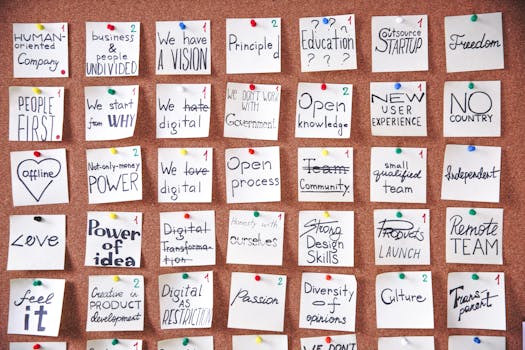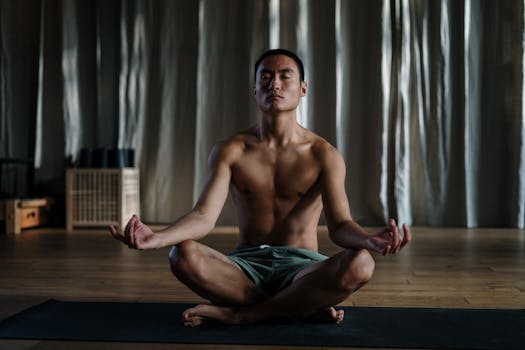
Unlocking Inner Peace: Mindfulness Meditation Techniques for Everyday Life
Takeaways: Mindfulness meditation is a powerful practice that can enhance mental clarity, reduce stress, and promote emotional well-being. This article explores various mindfulness meditation techniques that can easily be integrated into daily life, helping you cultivate a deeper awareness of the present moment.
In today’s fast-paced world, finding moments of peace can feel like a daunting task. However, mindfulness meditation offers a simple yet effective way to reconnect with ourselves and find calm amidst the chaos. This article will delve into various mindfulness meditation techniques, providing you with tools to enhance your practice and integrate it into your everyday life.
What is Mindfulness Meditation?

The Benefits of Mindfulness Meditation
Practicing mindfulness meditation has numerous benefits, including:
- Reduced Stress: Mindfulness meditation helps lower cortisol levels, the hormone associated with stress.
- Enhanced Focus: Regular practice improves attention span and concentration.
- Emotional Wellbeing: Mindfulness fosters a greater awareness of emotions, leading to better emotional regulation.
- Improved Relationships: Increased empathy and understanding can enhance interpersonal connections.
- Better Sleep: Mindfulness can help calm the mind, making it easier to fall asleep and stay asleep.
Mindfulness Meditation Techniques

1. Breath Awareness Meditation
This is one of the simplest and most effective mindfulness meditation techniques. It involves focusing your attention on your breath. Here’s how to practice it:
- Find a quiet place to sit comfortably.
- Close your eyes and take a few deep breaths to settle into the moment.
- Begin to notice your breath as it flows in and out.
- If your mind wanders, gently bring your focus back to your breath.
- Continue for 5-10 minutes, gradually increasing the time as you become more comfortable.
2. Body Scan Meditation
The body scan technique helps you develop a deeper awareness of physical sensations. Here’s how to do it:
- Lie down in a comfortable position or sit with your back straight.
- Close your eyes and take a few deep breaths.
- Begin by focusing on your toes, noticing any sensations or feelings.
- Gradually move your attention up your body, part by part, until you reach the crown of your head.
- Take your time, and if your mind wanders, gently return to the part of the body you were focusing on.
3. Guided Meditation
Guided meditation involves listening to a teacher or a recording that leads you through the meditation process. This can be especially helpful for beginners. You can find many apps and online resources that offer guided meditations for various purposes, such as stress relief, sleep, or enhancing focus.
4. Mindful Walking
This technique combines mindfulness with movement. Here’s how to practice mindful walking:
- Find a place where you can walk undisturbed.
- Begin walking slowly and pay attention to the sensation of your feet touching the ground.
- Notice how your body feels as you move, the rhythm of your breath, and the environment around you.
- If your mind wanders, gently bring your focus back to the experience of walking.
5. Loving-Kindness Meditation
This technique focuses on cultivating compassion and kindness towards yourself and others. To practice loving-kindness meditation:
- Begin in a comfortable seated position and close your eyes.
- Start by generating feelings of love and kindness towards yourself.
- Once you feel that warmth, gradually extend these feelings to loved ones, acquaintances, and even individuals you find challenging.
- Repeat phrases like “May I be happy, may I be healthy, may I be safe” for each person in your mind.
Incorporating Mindfulness into Daily Life

1. Mindful Eating
Eating mindfully means slowing down and savoring each bite. Pay attention to the flavors, textures, and smells of your food. This can enhance your eating experience and help prevent overeating.
2. Mindful Listening
Practice being fully present when conversing with others. Listen without planning your response while the other person is talking, and observe your reactions and thoughts without judgment.
3. Mindful Technology Use
Set boundaries around your technology use. When using your phone or computer, take a moment to breathe and ground yourself beforehand. Consider applying mindfulness principles to social media use by being aware of your emotions and reactions.
4. Daily Mindfulness Reminders
Set reminders throughout your day to pause and check in with yourself. You can use sticky notes, phone alerts, or even breathing techniques as cues to practice mindfulness.
5. Create a Mindfulness Space
Designate a space in your home for mindfulness practice. It could be a corner with cushions, plants, or calming images. This physical space can serve as a reminder to take time for mindfulness each day.






